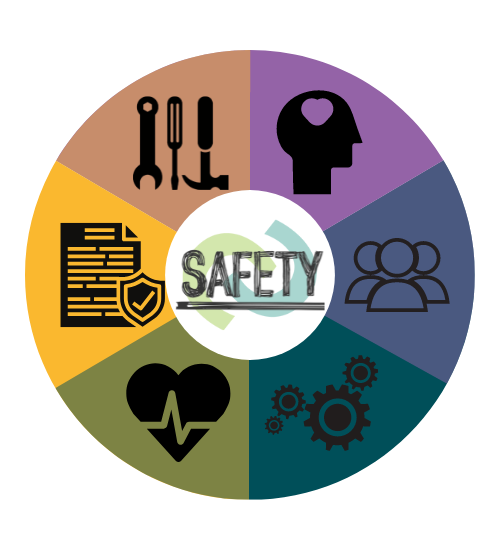CCSA Safety Segments
What's in the CCSA Safety Segments?
-
Weekly Resource and Directions
It could be a CCSA resource - poster, infographic, article, short video, or PowerPoint slides or a link to an external resource.
-
Guidance Questions
These questions can be used to facilitate the discussions or relate to current practice.
-
Alternate Activity Resource
We want to give you options!
- Click the visual on the left to learn more!
Featured Topic: Injury Prevention
Injury prevention isn’t just a checklist—it’s a culture that starts with strong management commitment and leadership. When leaders actively support safety initiatives, allocate resources, and model safe behaviors, it builds a workplace where safety is a shared priority. Being alerted to risks through regular hazard identification – including inspections, employee feedback, and reporting—helps catch potential issues before they cause harm. Once hazards are recognized, implementing effective risk control measures such as engineering solutions, safe procedures, and signage reduces or eliminates those risks.
Collaboration plays a vital role, and Joint Health & Safety Committees bring workers and management together to review incidents, recommend improvements, and promote a culture of shared responsibility. Ongoing training and open communication keep everyone informed and prepared to respond safely.
Stay Safe and Enjoy Your Summer!
Click on the safety segments below to learn more:
Previous Topics:
 Summer brings sunshine, outdoor adventures, and much-needed downtime—but it also comes with seasonal risks. This month's Safety Segment focuses on five key areas to help you stay safe and prepared all summer long.
Summer brings sunshine, outdoor adventures, and much-needed downtime—but it also comes with seasonal risks. This month's Safety Segment focuses on five key areas to help you stay safe and prepared all summer long.
Click the links to download each segment page:

Click the links to download each segment page:

Click the links to download each segment page:

Click the links to download each segment page:
 Injuries of this kind are still a critical concern in the industry, as this was over half of the total reported injuries in 2023.Ergonomics is much more than an office chair or a sit-to-stand desk.We can find examples of ergonomics in all departments and tasks.Let’s take a look at what Ergonomics can do for you in preventing an injury.
Injuries of this kind are still a critical concern in the industry, as this was over half of the total reported injuries in 2023.Ergonomics is much more than an office chair or a sit-to-stand desk.We can find examples of ergonomics in all departments and tasks.Let’s take a look at what Ergonomics can do for you in preventing an injury.
Click the links to download each segment page:
 Psychological safety is just as important as physical safety.Work-related stress is a significant issue, with many employees experiencing high levels of anxiety, emotional exhaustion, and burnout.Factors such as long hours, high demands, lack of control, and insufficient support can increase these feelings.here is a growing need to support employees’ mental well-being through initiatives like flexible work arrangements, mental health resources, and creating a respectful and supportive work environment.
Psychological safety is just as important as physical safety.Work-related stress is a significant issue, with many employees experiencing high levels of anxiety, emotional exhaustion, and burnout.Factors such as long hours, high demands, lack of control, and insufficient support can increase these feelings.here is a growing need to support employees’ mental well-being through initiatives like flexible work arrangements, mental health resources, and creating a respectful and supportive work environment.
Click the links to download each segment page:
 December is the festive season that brings an array of parties, celebrations, decorations, and gatherings with family and friends.While these activities are enjoyable and create lasting memories, they also come with certain safety risks that we need to be aware of to ensure we can continue to enjoy these times.From the increased use of electrical decorations and candles, to the potential for accidents during travel and winter sports, it’s important to take precautions.Check out this month’s safety segment for more.
December is the festive season that brings an array of parties, celebrations, decorations, and gatherings with family and friends.While these activities are enjoyable and create lasting memories, they also come with certain safety risks that we need to be aware of to ensure we can continue to enjoy these times.From the increased use of electrical decorations and candles, to the potential for accidents during travel and winter sports, it’s important to take precautions.Check out this month’s safety segment for more.
Click the links to download each segment page:
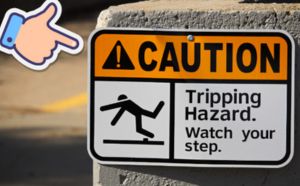 Every year Canadian workers experience near misses and minor injuries resulting from slips, trips, and falls, in fact, 20% of all workplace accidents result from these types of incidents.However, these incidents can lead to lost time claims, making it an important consideration in preventing injuries at work and taking steps to prevent them, by reducing the hazards that cause slip and trip type incidents.Many of these slips, trips, and falls occur during winter months and spike during and after snowfalls or drastic weather changes.Preventing wintertime falls is not a difficult process, it is not complicated.Check out this month’s safety segment for more.
The code of the month for December is the contingency plans for a Lockdown scenario.While we all hope that we are never in this type of situation it is important that you know what to do.
Every year Canadian workers experience near misses and minor injuries resulting from slips, trips, and falls, in fact, 20% of all workplace accidents result from these types of incidents.However, these incidents can lead to lost time claims, making it an important consideration in preventing injuries at work and taking steps to prevent them, by reducing the hazards that cause slip and trip type incidents.Many of these slips, trips, and falls occur during winter months and spike during and after snowfalls or drastic weather changes.Preventing wintertime falls is not a difficult process, it is not complicated.Check out this month’s safety segment for more.
The code of the month for December is the contingency plans for a Lockdown scenario.While we all hope that we are never in this type of situation it is important that you know what to do.
Click the links to download each segment page:
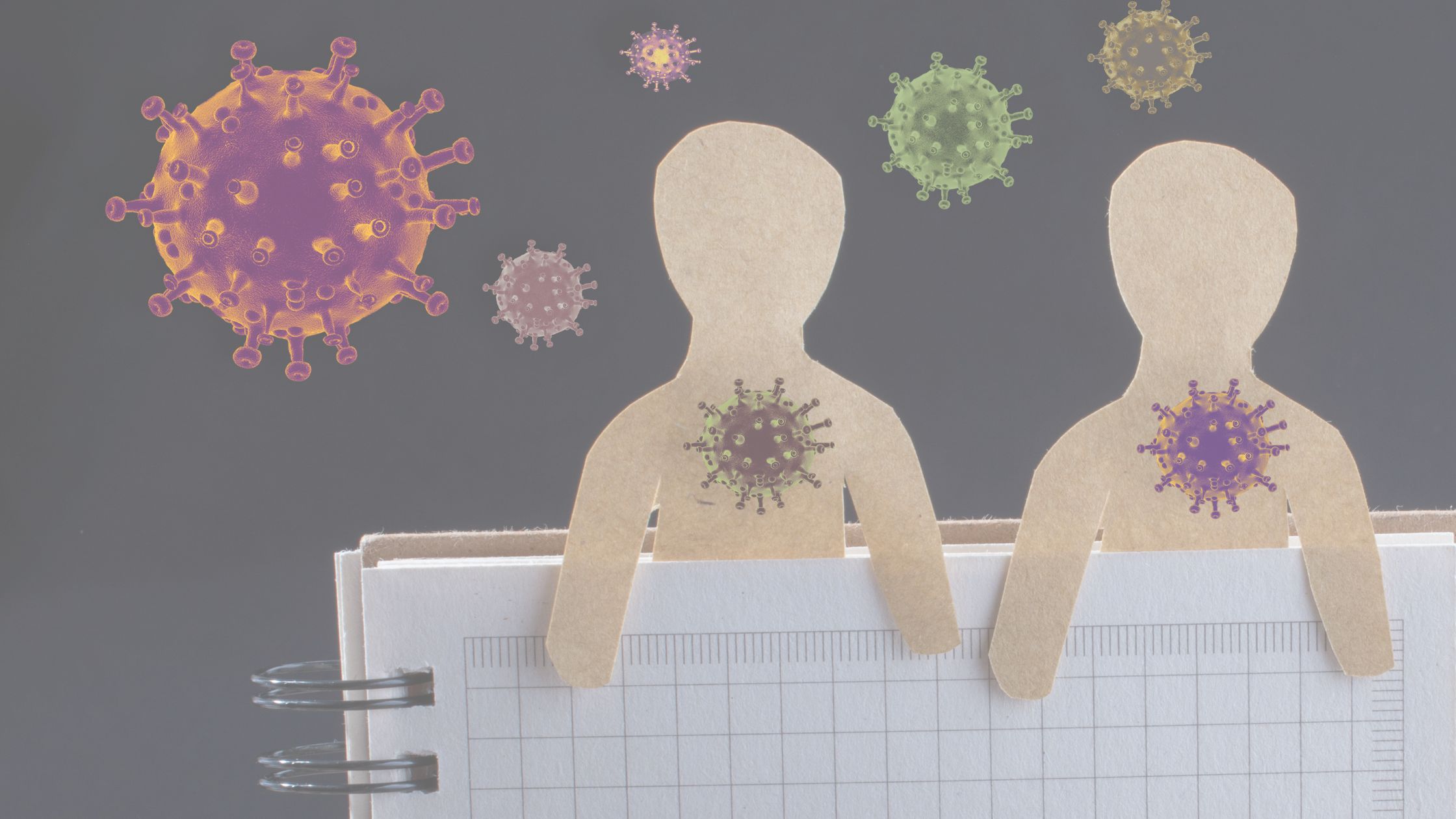 Flu season is here again.Flu season is here again.These figures emphasize the importance of point-of-care risk assessments.This safety segment will cover Flu Awareness and what we can do to keep the Flu bug at bay, not only to protect ourselves but for those around us… at home and at work.
Flu season is here again.Flu season is here again.These figures emphasize the importance of point-of-care risk assessments.This safety segment will cover Flu Awareness and what we can do to keep the Flu bug at bay, not only to protect ourselves but for those around us… at home and at work.
Click the links to download each segment page:
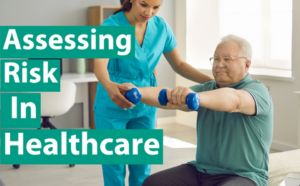 Alberta health care employees, which includes health care aides and nurses, only comprise a little over 6% of the full-time equivalent employees in the workforce.However, healthcare workers are collectively responsible for almost 20% of the overexertion injury and 13% of the fall injuries.These figures emphasize the importance of point-of-care risk assessments.Use this safety segment to introduce and demonstrate a point of care risk assessment.
Alberta health care employees, which includes health care aides and nurses, only comprise a little over 6% of the full-time equivalent employees in the workforce.However, healthcare workers are collectively responsible for almost 20% of the overexertion injury and 13% of the fall injuries.These figures emphasize the importance of point-of-care risk assessments.Use this safety segment to introduce and demonstrate a point of care risk assessment.
Click the links to download each segment page:
 Caring for others can both be a positive and negative experience. When caring for others you may feel a deep sense of fulfillment and purposeOn the other hand, caregiving can be very demanding and stressful. Balancing one’s personal needs with caring for another can be extremely challenging.
Caring for others can both be a positive and negative experience. When caring for others you may feel a deep sense of fulfillment and purposeOn the other hand, caregiving can be very demanding and stressful. Balancing one’s personal needs with caring for another can be extremely challenging.
Click the links to download each segment page:
 Mental health is as important as physical health, this much is fact. But what are we doing about it?Are we caring for ourselves as much as we are other people.Our bodies are like cell phone batteries and like those batteries, we can drain ourselves and need a charge to bring us back up.What are you doing to charge your battery?
Mental health is as important as physical health, this much is fact. But what are we doing about it?Are we caring for ourselves as much as we are other people.Our bodies are like cell phone batteries and like those batteries, we can drain ourselves and need a charge to bring us back up.What are you doing to charge your battery?
Click the links to download each segment page:
 As the summer season approaches, it’s a time when we eagerly embrace warmer weather, longer days, and outdoor activities However, amidst the excitement, fun and relaxation, we must not forget that safety is not only for the workplace.Whether you are at work or at home with your family safety should always remain a top priority.
As the summer season approaches, it’s a time when we eagerly embrace warmer weather, longer days, and outdoor activities However, amidst the excitement, fun and relaxation, we must not forget that safety is not only for the workplace.Whether you are at work or at home with your family safety should always remain a top priority.
Click the links to download each segment page:
 Emergencies may occur, the question is: will you be ready when they do? Dealing with emergencies requires a lot of different skills, teamwork, planning, communicating, and more.Above all preparedness can be equated to practice.Review the pages of the May Safety Segment and practice some of the skills mentioned.
Emergencies may occur, the question is: will you be ready when they do? Dealing with emergencies requires a lot of different skills, teamwork, planning, communicating, and more.Above all preparedness can be equated to practice.Review the pages of the May Safety Segment and practice some of the skills mentioned.
Click the links to download each segment page:
 Volunteers not only should be celebrated but trained to keep them safe as well. These safety segments will go through the various ways we can keep our volunteers safe and celebrate the great contribution they provide.
Volunteers not only should be celebrated but trained to keep them safe as well. These safety segments will go through the various ways we can keep our volunteers safe and celebrate the great contribution they provide.
Click the links to download each segment page:
 As an employer, you can enhance your employees' well-being and foster healthier communities by advocating for better eating habits and increased physical activity in your workplace. The emergency response focus this month is Loss of Services Contingency Planning. .
As an employer, you can enhance your employees' well-being and foster healthier communities by advocating for better eating habits and increased physical activity in your workplace. The emergency response focus this month is Loss of Services Contingency Planning. .
Click the links to download each segment page:
 Injury Prevention is an important topic in Continuing Care; with the rising injury and WCB premium rates, looking at frequent causes and prevention strategies is key. Musculoskeletal Injuries (MSI’s), encompass strains, sprains, musculoskeletal disorders (MSDs), and repetitive strain injuries and can impact various body regions, including the lower back, shoulders, neck, elbows, hands or wrists, legs, and feet.
Injury Prevention is an important topic in Continuing Care; with the rising injury and WCB premium rates, looking at frequent causes and prevention strategies is key. Musculoskeletal Injuries (MSI’s), encompass strains, sprains, musculoskeletal disorders (MSDs), and repetitive strain injuries and can impact various body regions, including the lower back, shoulders, neck, elbows, hands or wrists, legs, and feet.
Click the links to download each segment page:
 Safety culture is the collective attitudes, values, and beliefs that everyone in the work environment puts safety at the forefront of everything they do. Having a robust safety culture is paramount in employers maintaining safe operations.Safety Strong safety cultures not only provide a safer environment for employees but improve employee job satisfaction and can propel organizational growth.
Safety culture is the collective attitudes, values, and beliefs that everyone in the work environment puts safety at the forefront of everything they do. Having a robust safety culture is paramount in employers maintaining safe operations.Safety Strong safety cultures not only provide a safer environment for employees but improve employee job satisfaction and can propel organizational growth.
Click the links to download each segment page:
 Emergency response planning is a key component for any organization that wants to protect lives, minimize damages, and uphold operational continuity during unforeseen events. It requires a proactive approach, ongoing assessment, and engagement from all stakeholders to ensure a comprehensive, effective, and adaptable emergency response system.
Emergency response planning is a key component for any organization that wants to protect lives, minimize damages, and uphold operational continuity during unforeseen events. It requires a proactive approach, ongoing assessment, and engagement from all stakeholders to ensure a comprehensive, effective, and adaptable emergency response system.
Click the links to download each segment page:
 Establishing relationships is a fundamental aspect of delivering exceptional care across various environments, with a particular emphasis on supporting residents and enhancing their quality of life. However, these connections are equally crucial for the safety and well-being of the care industry’s workforce.> Establishing relationships extends beyond just staff interactions with residents to include fostering enduring connections with residents’ families.
Establishing relationships is a fundamental aspect of delivering exceptional care across various environments, with a particular emphasis on supporting residents and enhancing their quality of life. However, these connections are equally crucial for the safety and well-being of the care industry’s workforce.> Establishing relationships extends beyond just staff interactions with residents to include fostering enduring connections with residents’ families.
Click the links to download each segment page:
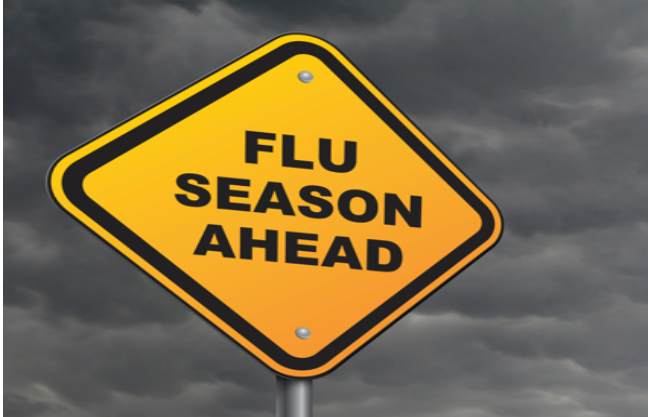 Most people who get sick with influenza will recover, but in come cases, it can require hospitalization. There are multiple precautions one can take to reduce the risk of spreading Influenza.> It is crucial to be prepared for emergencies and disasters so we are aware of what we need to do and where to go
Most people who get sick with influenza will recover, but in come cases, it can require hospitalization. There are multiple precautions one can take to reduce the risk of spreading Influenza.> It is crucial to be prepared for emergencies and disasters so we are aware of what we need to do and where to go
Click the links to download each segment page:
 When ergonomics in the workplace is discussed often the first thought is to those workers working at a desk doing computer work; however, for those who working the standing position ergonomics is just as important. These safety segments will help leaders promote a more ergonomic friendly environment for their standing workers in the supportive services where standing is the only option to complete their work.
When ergonomics in the workplace is discussed often the first thought is to those workers working at a desk doing computer work; however, for those who working the standing position ergonomics is just as important. These safety segments will help leaders promote a more ergonomic friendly environment for their standing workers in the supportive services where standing is the only option to complete their work.
Click the links to download each segment page:
 Today’s workforce is very structurally different that the workforce of the past. Workplaces today are made up of staff from many different generations. Some workplaces can consist of workers from up to 5 generations.In Continuing Care, if we include volunteers, this can be very true.This can lead to some challenges.These safety segments would help leaders promote a more mentally healthy workplace.
Today’s workforce is very structurally different that the workforce of the past. Workplaces today are made up of staff from many different generations. Some workplaces can consist of workers from up to 5 generations.In Continuing Care, if we include volunteers, this can be very true.This can lead to some challenges.These safety segments would help leaders promote a more mentally healthy workplace.
Click the links to download each segment page:
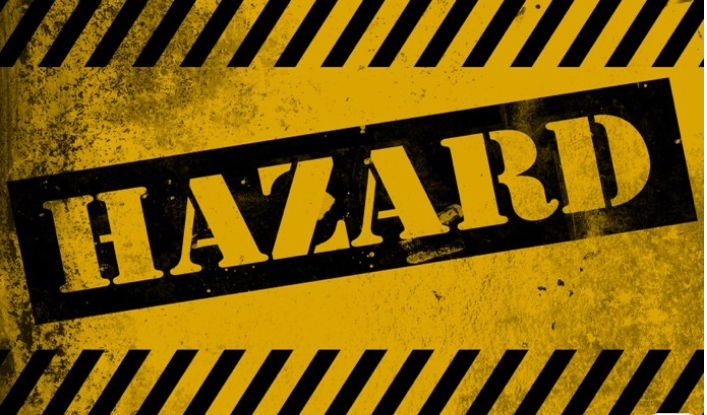 The Alberta legislation states that a hazard is a “situation, condition, or, thing that may be dangerous to the health and safety of workers.” With the help of hazard assessments, we are able to build a healthier and much safer workplace.This process provides the workplace an opportunity to prevent injuries and illnesses by identifying any hazards and implementing appropriate controls.
The Alberta legislation states that a hazard is a “situation, condition, or, thing that may be dangerous to the health and safety of workers.” With the help of hazard assessments, we are able to build a healthier and much safer workplace.This process provides the workplace an opportunity to prevent injuries and illnesses by identifying any hazards and implementing appropriate controls.
Click the links to download each segment page:
 Situational awareness is the perception of the elements in the environment, then understanding their impact on your safety and the safety of others. Developing situational awareness as a skill will determine how well you will react to preserve that safety.It is critical to developing situational awareness skills to optimize your decision-making, choosing the right path can make the difference in avoiding injury
Situational awareness is the perception of the elements in the environment, then understanding their impact on your safety and the safety of others. Developing situational awareness as a skill will determine how well you will react to preserve that safety.It is critical to developing situational awareness skills to optimize your decision-making, choosing the right path can make the difference in avoiding injury
Click the links to download each segment page:
 Complacency occurs in every workplace and individual complacency will differ. Complacency can be defined as self-satisfaction with yourself and your own abilities, especially when accompanied by a lack of awareness of present dangers or process deficiencies..Most jobs are repetitive, and gradually people can take things for granted, in their daily work. This can lead to health and safety risks to themselves and their colleagues.
Complacency occurs in every workplace and individual complacency will differ. Complacency can be defined as self-satisfaction with yourself and your own abilities, especially when accompanied by a lack of awareness of present dangers or process deficiencies..Most jobs are repetitive, and gradually people can take things for granted, in their daily work. This can lead to health and safety risks to themselves and their colleagues.
Click the links to download each segment page:
 Person centred care is defined as “empowering people to take charge of their own health rather than being passive recipients of services” by the World Health Organization.
Person centred care is defined as “empowering people to take charge of their own health rather than being passive recipients of services” by the World Health Organization.
 A culture is the shared attitudes, beliefs, and values of a group. In the workplace a culture is the shared attitudes, beliefs, and values an organization commits to that influences their practices in pursuing their organizational goals. When you consider that definition, a safety culture is the shared attitude and belief that safety must be amongst the highest values that guides an organization, meaning, safety should influence every function within an organization while pursuing their main goal of providing services or producing goods.
Click on the safety segments to learn more:
A culture is the shared attitudes, beliefs, and values of a group. In the workplace a culture is the shared attitudes, beliefs, and values an organization commits to that influences their practices in pursuing their organizational goals. When you consider that definition, a safety culture is the shared attitude and belief that safety must be amongst the highest values that guides an organization, meaning, safety should influence every function within an organization while pursuing their main goal of providing services or producing goods.
Click on the safety segments to learn more:
 Ergonomics is the science of designing the environment, equipment, tools, tasks and job to the worker. The goal is to lessen muscle fatigue, increase productivity and reduce the number and severity of musculoskeletal injuries (MSIs).
Ergonomics is the science of designing the environment, equipment, tools, tasks and job to the worker. The goal is to lessen muscle fatigue, increase productivity and reduce the number and severity of musculoskeletal injuries (MSIs).
Click the links to download each segment page:
 Communicating about safety is challenging in any workplace, especially in a healthcare facility. Your challenge as a safety leader is conveying important information the workers need to do their job safely. Workers also need support to be able to effectively report concerns that may impose safety risks.
Click on the safety segments below that would help support leaders, managers and workers in communicating safety.:
Communicating about safety is challenging in any workplace, especially in a healthcare facility. Your challenge as a safety leader is conveying important information the workers need to do their job safely. Workers also need support to be able to effectively report concerns that may impose safety risks.
Click on the safety segments below that would help support leaders, managers and workers in communicating safety.:
 More action is needed to effect and drive change in preventing workplace violence. Preventing and mitigating violence, in the workplace takes a multi-faceted approach. Long-term care home administrators, nurses, and other healthcare workers, along with the broader public, must appreciate and understand that workplace violence is not part of the job, and every effort must be made to prevent it.
Click the links to download each segment page:
More action is needed to effect and drive change in preventing workplace violence. Preventing and mitigating violence, in the workplace takes a multi-faceted approach. Long-term care home administrators, nurses, and other healthcare workers, along with the broader public, must appreciate and understand that workplace violence is not part of the job, and every effort must be made to prevent it.
Click the links to download each segment page:
 Personal protective equipment (PPE) is part of what is referred to as the hierarchy of controls in hazard management. PPE plays a necessary part in the everyday work performed in continuing care. To work safely, each worker must select the correct PPE and use it correctly.
Personal protective equipment (PPE) is part of what is referred to as the hierarchy of controls in hazard management. PPE plays a necessary part in the everyday work performed in continuing care. To work safely, each worker must select the correct PPE and use it correctly.
Click the links to download each segment page:
 Health and safety committees (HSCs) are an integral part of the safety culture of any organization regardless of the organizations size or complexity. HSCs serve a vital purpose beyond being drivers of a healthy safety culture, they are stewards of the safety programs within the safety management system.
Click on the safety segments to learn more:
Health and safety committees (HSCs) are an integral part of the safety culture of any organization regardless of the organizations size or complexity. HSCs serve a vital purpose beyond being drivers of a healthy safety culture, they are stewards of the safety programs within the safety management system.
Click on the safety segments to learn more:
 The Holidays are a wonderful time of year but in addition to the celebratory atmosphere, safety cannot be put on the shelf like an elf. Safety always needs to be a consideration throughout the year and during the Holidays.
This CCSA Safety Segment resource will help leaders and facilitators to lead discussions on different Holiday safety topics and emphasize the importance of safety fundamentals such as good body mechanics and informal hazard assessments even during the Christmas season.
Click the links to download each segment page:
The Holidays are a wonderful time of year but in addition to the celebratory atmosphere, safety cannot be put on the shelf like an elf. Safety always needs to be a consideration throughout the year and during the Holidays.
This CCSA Safety Segment resource will help leaders and facilitators to lead discussions on different Holiday safety topics and emphasize the importance of safety fundamentals such as good body mechanics and informal hazard assessments even during the Christmas season.
Click the links to download each segment page:
 Slips and trips: “Slips and trips are one of the main causes of injuries in Canada. Slips happen when there is not much traction or friction between your footwear and the surface you are walking on.”
Slips and trips: “Slips and trips are one of the main causes of injuries in Canada. Slips happen when there is not much traction or friction between your footwear and the surface you are walking on.”
Falls: “Falls are hazards that are always present and will always be a cause for concern. According to the Canadian Centre for Occupational Health and Safety, over 42,000 workers are injured annually due to falls. Statistics show that 30% of falls are from a height”
Click the links to download each segment page:
 Keeping healthy and staying safe is important for our mind and body. Not only does getting sick take a toll on our daily life, but it also impacts our workplace and the safety of those who are around us, most especially our residents. We must remember to take care to give care.
Keeping healthy and staying safe is important for our mind and body. Not only does getting sick take a toll on our daily life, but it also impacts our workplace and the safety of those who are around us, most especially our residents. We must remember to take care to give care.
Click the links to download each segment page:
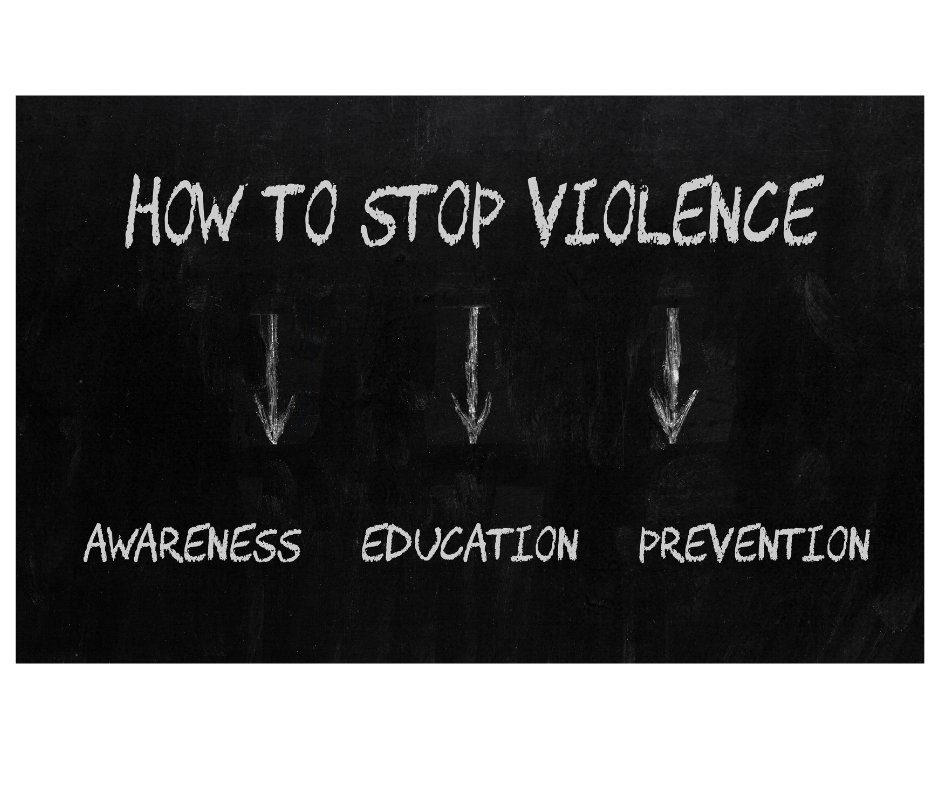
What can employers do to protect their workers from becoming victims of workplace violence? The primary goal is to prevent these types of incidents by minimizing the risks. A secondary goal is to make sure your company and workforce are prepared for violence so you can minimize casualties and respond quickly in the event of a violent incident.
Click the links to download each segment page:
 Emergency Response is the systematic response to an unexpected or dangerous occurrence. The goal of any emergency response procedure is to mitigate the impact of the event on people and the environment.
Emergency Response is the systematic response to an unexpected or dangerous occurrence. The goal of any emergency response procedure is to mitigate the impact of the event on people and the environment.
Click the links to download each segment page:
 As the summer months are approaching so can the occurrence of severe weather. It is important that we are prepared for anything since severe weather can occur at any time and fast.
As the summer months are approaching so can the occurrence of severe weather. It is important that we are prepared for anything since severe weather can occur at any time and fast.
Click the links to download each segment page:
 Most adults would spend most of their waking hours at work and with one in five Canadians experiencing a mental health problem or illness, prioritizing self-care is critical to ensure that staff are not burning out. Employers have a role to play in promoting self-care of their employees and to prevent mental or psychological harm.
Most adults would spend most of their waking hours at work and with one in five Canadians experiencing a mental health problem or illness, prioritizing self-care is critical to ensure that staff are not burning out. Employers have a role to play in promoting self-care of their employees and to prevent mental or psychological harm.
Click the links to download each segment page:
 Summer brings sunshine, outdoor adventures, and much-needed downtime—but it also comes with seasonal risks. This month's Safety Segment focuses on five key areas to help you stay safe and prepared all summer long.
Summer brings sunshine, outdoor adventures, and much-needed downtime—but it also comes with seasonal risks. This month's Safety Segment focuses on five key areas to help you stay safe and prepared all summer long.
Click the links to download each segment page:

Click the links to download each segment page:

Click the links to download each segment page:

Click the links to download each segment page:
 Injuries of this kind are still a critical concern in the industry, as this was over half of the total reported injuries in 2023.Ergonomics is much more than an office chair or a sit-to-stand desk.We can find examples of ergonomics in all departments and tasks.Let’s take a look at what Ergonomics can do for you in preventing an injury.
Injuries of this kind are still a critical concern in the industry, as this was over half of the total reported injuries in 2023.Ergonomics is much more than an office chair or a sit-to-stand desk.We can find examples of ergonomics in all departments and tasks.Let’s take a look at what Ergonomics can do for you in preventing an injury.
Click the links to download each segment page:
 Psychological safety is just as important as physical safety.Work-related stress is a significant issue, with many employees experiencing high levels of anxiety, emotional exhaustion, and burnout.Factors such as long hours, high demands, lack of control, and insufficient support can increase these feelings.here is a growing need to support employees’ mental well-being through initiatives like flexible work arrangements, mental health resources, and creating a respectful and supportive work environment.
Psychological safety is just as important as physical safety.Work-related stress is a significant issue, with many employees experiencing high levels of anxiety, emotional exhaustion, and burnout.Factors such as long hours, high demands, lack of control, and insufficient support can increase these feelings.here is a growing need to support employees’ mental well-being through initiatives like flexible work arrangements, mental health resources, and creating a respectful and supportive work environment.
Click the links to download each segment page:
 December is the festive season that brings an array of parties, celebrations, decorations, and gatherings with family and friends.While these activities are enjoyable and create lasting memories, they also come with certain safety risks that we need to be aware of to ensure we can continue to enjoy these times.From the increased use of electrical decorations and candles, to the potential for accidents during travel and winter sports, it’s important to take precautions.Check out this month’s safety segment for more.
December is the festive season that brings an array of parties, celebrations, decorations, and gatherings with family and friends.While these activities are enjoyable and create lasting memories, they also come with certain safety risks that we need to be aware of to ensure we can continue to enjoy these times.From the increased use of electrical decorations and candles, to the potential for accidents during travel and winter sports, it’s important to take precautions.Check out this month’s safety segment for more.
Click the links to download each segment page:
 Every year Canadian workers experience near misses and minor injuries resulting from slips, trips, and falls, in fact, 20% of all workplace accidents result from these types of incidents.However, these incidents can lead to lost time claims, making it an important consideration in preventing injuries at work and taking steps to prevent them, by reducing the hazards that cause slip and trip type incidents.Many of these slips, trips, and falls occur during winter months and spike during and after snowfalls or drastic weather changes.Preventing wintertime falls is not a difficult process, it is not complicated.Check out this month’s safety segment for more.
The code of the month for December is the contingency plans for a Lockdown scenario.While we all hope that we are never in this type of situation it is important that you know what to do.
Every year Canadian workers experience near misses and minor injuries resulting from slips, trips, and falls, in fact, 20% of all workplace accidents result from these types of incidents.However, these incidents can lead to lost time claims, making it an important consideration in preventing injuries at work and taking steps to prevent them, by reducing the hazards that cause slip and trip type incidents.Many of these slips, trips, and falls occur during winter months and spike during and after snowfalls or drastic weather changes.Preventing wintertime falls is not a difficult process, it is not complicated.Check out this month’s safety segment for more.
The code of the month for December is the contingency plans for a Lockdown scenario.While we all hope that we are never in this type of situation it is important that you know what to do.
Click the links to download each segment page:
 Flu season is here again.Flu season is here again.These figures emphasize the importance of point-of-care risk assessments.This safety segment will cover Flu Awareness and what we can do to keep the Flu bug at bay, not only to protect ourselves but for those around us… at home and at work.
Flu season is here again.Flu season is here again.These figures emphasize the importance of point-of-care risk assessments.This safety segment will cover Flu Awareness and what we can do to keep the Flu bug at bay, not only to protect ourselves but for those around us… at home and at work.
Click the links to download each segment page:
 Alberta health care employees, which includes health care aides and nurses, only comprise a little over 6% of the full-time equivalent employees in the workforce.However, healthcare workers are collectively responsible for almost 20% of the overexertion injury and 13% of the fall injuries.These figures emphasize the importance of point-of-care risk assessments.Use this safety segment to introduce and demonstrate a point of care risk assessment.
Alberta health care employees, which includes health care aides and nurses, only comprise a little over 6% of the full-time equivalent employees in the workforce.However, healthcare workers are collectively responsible for almost 20% of the overexertion injury and 13% of the fall injuries.These figures emphasize the importance of point-of-care risk assessments.Use this safety segment to introduce and demonstrate a point of care risk assessment.
Click the links to download each segment page:
 Caring for others can both be a positive and negative experience. When caring for others you may feel a deep sense of fulfillment and purposeOn the other hand, caregiving can be very demanding and stressful. Balancing one’s personal needs with caring for another can be extremely challenging.
Caring for others can both be a positive and negative experience. When caring for others you may feel a deep sense of fulfillment and purposeOn the other hand, caregiving can be very demanding and stressful. Balancing one’s personal needs with caring for another can be extremely challenging.
Click the links to download each segment page:
 Mental health is as important as physical health, this much is fact. But what are we doing about it?Are we caring for ourselves as much as we are other people.Our bodies are like cell phone batteries and like those batteries, we can drain ourselves and need a charge to bring us back up.What are you doing to charge your battery?
Mental health is as important as physical health, this much is fact. But what are we doing about it?Are we caring for ourselves as much as we are other people.Our bodies are like cell phone batteries and like those batteries, we can drain ourselves and need a charge to bring us back up.What are you doing to charge your battery?
Click the links to download each segment page:
 As the summer season approaches, it’s a time when we eagerly embrace warmer weather, longer days, and outdoor activities However, amidst the excitement, fun and relaxation, we must not forget that safety is not only for the workplace.Whether you are at work or at home with your family safety should always remain a top priority.
As the summer season approaches, it’s a time when we eagerly embrace warmer weather, longer days, and outdoor activities However, amidst the excitement, fun and relaxation, we must not forget that safety is not only for the workplace.Whether you are at work or at home with your family safety should always remain a top priority.
Click the links to download each segment page:
 Emergencies may occur, the question is: will you be ready when they do? Dealing with emergencies requires a lot of different skills, teamwork, planning, communicating, and more.Above all preparedness can be equated to practice.Review the pages of the May Safety Segment and practice some of the skills mentioned.
Emergencies may occur, the question is: will you be ready when they do? Dealing with emergencies requires a lot of different skills, teamwork, planning, communicating, and more.Above all preparedness can be equated to practice.Review the pages of the May Safety Segment and practice some of the skills mentioned.
Click the links to download each segment page:
 Volunteers not only should be celebrated but trained to keep them safe as well. These safety segments will go through the various ways we can keep our volunteers safe and celebrate the great contribution they provide.
Volunteers not only should be celebrated but trained to keep them safe as well. These safety segments will go through the various ways we can keep our volunteers safe and celebrate the great contribution they provide.
Click the links to download each segment page:
 As an employer, you can enhance your employees' well-being and foster healthier communities by advocating for better eating habits and increased physical activity in your workplace. The emergency response focus this month is Loss of Services Contingency Planning. .
As an employer, you can enhance your employees' well-being and foster healthier communities by advocating for better eating habits and increased physical activity in your workplace. The emergency response focus this month is Loss of Services Contingency Planning. .
Click the links to download each segment page:
 Injury Prevention is an important topic in Continuing Care; with the rising injury and WCB premium rates, looking at frequent causes and prevention strategies is key. Musculoskeletal Injuries (MSI’s), encompass strains, sprains, musculoskeletal disorders (MSDs), and repetitive strain injuries and can impact various body regions, including the lower back, shoulders, neck, elbows, hands or wrists, legs, and feet.
Injury Prevention is an important topic in Continuing Care; with the rising injury and WCB premium rates, looking at frequent causes and prevention strategies is key. Musculoskeletal Injuries (MSI’s), encompass strains, sprains, musculoskeletal disorders (MSDs), and repetitive strain injuries and can impact various body regions, including the lower back, shoulders, neck, elbows, hands or wrists, legs, and feet.
Click the links to download each segment page:
 Safety culture is the collective attitudes, values, and beliefs that everyone in the work environment puts safety at the forefront of everything they do. Having a robust safety culture is paramount in employers maintaining safe operations.Safety Strong safety cultures not only provide a safer environment for employees but improve employee job satisfaction and can propel organizational growth.
Safety culture is the collective attitudes, values, and beliefs that everyone in the work environment puts safety at the forefront of everything they do. Having a robust safety culture is paramount in employers maintaining safe operations.Safety Strong safety cultures not only provide a safer environment for employees but improve employee job satisfaction and can propel organizational growth.
Click the links to download each segment page:
 Emergency response planning is a key component for any organization that wants to protect lives, minimize damages, and uphold operational continuity during unforeseen events. It requires a proactive approach, ongoing assessment, and engagement from all stakeholders to ensure a comprehensive, effective, and adaptable emergency response system.
Emergency response planning is a key component for any organization that wants to protect lives, minimize damages, and uphold operational continuity during unforeseen events. It requires a proactive approach, ongoing assessment, and engagement from all stakeholders to ensure a comprehensive, effective, and adaptable emergency response system.
Click the links to download each segment page:
 Establishing relationships is a fundamental aspect of delivering exceptional care across various environments, with a particular emphasis on supporting residents and enhancing their quality of life. However, these connections are equally crucial for the safety and well-being of the care industry’s workforce.> Establishing relationships extends beyond just staff interactions with residents to include fostering enduring connections with residents’ families.
Establishing relationships is a fundamental aspect of delivering exceptional care across various environments, with a particular emphasis on supporting residents and enhancing their quality of life. However, these connections are equally crucial for the safety and well-being of the care industry’s workforce.> Establishing relationships extends beyond just staff interactions with residents to include fostering enduring connections with residents’ families.
Click the links to download each segment page:
 Most people who get sick with influenza will recover, but in come cases, it can require hospitalization. There are multiple precautions one can take to reduce the risk of spreading Influenza.> It is crucial to be prepared for emergencies and disasters so we are aware of what we need to do and where to go
Most people who get sick with influenza will recover, but in come cases, it can require hospitalization. There are multiple precautions one can take to reduce the risk of spreading Influenza.> It is crucial to be prepared for emergencies and disasters so we are aware of what we need to do and where to go
Click the links to download each segment page:
 When ergonomics in the workplace is discussed often the first thought is to those workers working at a desk doing computer work; however, for those who working the standing position ergonomics is just as important. These safety segments will help leaders promote a more ergonomic friendly environment for their standing workers in the supportive services where standing is the only option to complete their work.
When ergonomics in the workplace is discussed often the first thought is to those workers working at a desk doing computer work; however, for those who working the standing position ergonomics is just as important. These safety segments will help leaders promote a more ergonomic friendly environment for their standing workers in the supportive services where standing is the only option to complete their work.
Click the links to download each segment page:
 Today’s workforce is very structurally different that the workforce of the past. Workplaces today are made up of staff from many different generations. Some workplaces can consist of workers from up to 5 generations.In Continuing Care, if we include volunteers, this can be very true.This can lead to some challenges.These safety segments would help leaders promote a more mentally healthy workplace.
Today’s workforce is very structurally different that the workforce of the past. Workplaces today are made up of staff from many different generations. Some workplaces can consist of workers from up to 5 generations.In Continuing Care, if we include volunteers, this can be very true.This can lead to some challenges.These safety segments would help leaders promote a more mentally healthy workplace.
Click the links to download each segment page:
 The Alberta legislation states that a hazard is a “situation, condition, or, thing that may be dangerous to the health and safety of workers.” With the help of hazard assessments, we are able to build a healthier and much safer workplace.This process provides the workplace an opportunity to prevent injuries and illnesses by identifying any hazards and implementing appropriate controls.
The Alberta legislation states that a hazard is a “situation, condition, or, thing that may be dangerous to the health and safety of workers.” With the help of hazard assessments, we are able to build a healthier and much safer workplace.This process provides the workplace an opportunity to prevent injuries and illnesses by identifying any hazards and implementing appropriate controls.
Click the links to download each segment page:
 Situational awareness is the perception of the elements in the environment, then understanding their impact on your safety and the safety of others. Developing situational awareness as a skill will determine how well you will react to preserve that safety.It is critical to developing situational awareness skills to optimize your decision-making, choosing the right path can make the difference in avoiding injury
Situational awareness is the perception of the elements in the environment, then understanding their impact on your safety and the safety of others. Developing situational awareness as a skill will determine how well you will react to preserve that safety.It is critical to developing situational awareness skills to optimize your decision-making, choosing the right path can make the difference in avoiding injury
Click the links to download each segment page:
 Complacency occurs in every workplace and individual complacency will differ. Complacency can be defined as self-satisfaction with yourself and your own abilities, especially when accompanied by a lack of awareness of present dangers or process deficiencies..Most jobs are repetitive, and gradually people can take things for granted, in their daily work. This can lead to health and safety risks to themselves and their colleagues.
Complacency occurs in every workplace and individual complacency will differ. Complacency can be defined as self-satisfaction with yourself and your own abilities, especially when accompanied by a lack of awareness of present dangers or process deficiencies..Most jobs are repetitive, and gradually people can take things for granted, in their daily work. This can lead to health and safety risks to themselves and their colleagues.
Click the links to download each segment page:
 Person centred care is defined as “empowering people to take charge of their own health rather than being passive recipients of services” by the World Health Organization.
Person centred care is defined as “empowering people to take charge of their own health rather than being passive recipients of services” by the World Health Organization.
 A culture is the shared attitudes, beliefs, and values of a group. In the workplace a culture is the shared attitudes, beliefs, and values an organization commits to that influences their practices in pursuing their organizational goals. When you consider that definition, a safety culture is the shared attitude and belief that safety must be amongst the highest values that guides an organization, meaning, safety should influence every function within an organization while pursuing their main goal of providing services or producing goods.
Click on the safety segments to learn more:
A culture is the shared attitudes, beliefs, and values of a group. In the workplace a culture is the shared attitudes, beliefs, and values an organization commits to that influences their practices in pursuing their organizational goals. When you consider that definition, a safety culture is the shared attitude and belief that safety must be amongst the highest values that guides an organization, meaning, safety should influence every function within an organization while pursuing their main goal of providing services or producing goods.
Click on the safety segments to learn more:
 Ergonomics is the science of designing the environment, equipment, tools, tasks and job to the worker. The goal is to lessen muscle fatigue, increase productivity and reduce the number and severity of musculoskeletal injuries (MSIs).
Ergonomics is the science of designing the environment, equipment, tools, tasks and job to the worker. The goal is to lessen muscle fatigue, increase productivity and reduce the number and severity of musculoskeletal injuries (MSIs).
Click the links to download each segment page:
 Communicating about safety is challenging in any workplace, especially in a healthcare facility. Your challenge as a safety leader is conveying important information the workers need to do their job safely. Workers also need support to be able to effectively report concerns that may impose safety risks.
Click on the safety segments below that would help support leaders, managers and workers in communicating safety.:
Communicating about safety is challenging in any workplace, especially in a healthcare facility. Your challenge as a safety leader is conveying important information the workers need to do their job safely. Workers also need support to be able to effectively report concerns that may impose safety risks.
Click on the safety segments below that would help support leaders, managers and workers in communicating safety.:
 More action is needed to effect and drive change in preventing workplace violence. Preventing and mitigating violence, in the workplace takes a multi-faceted approach. Long-term care home administrators, nurses, and other healthcare workers, along with the broader public, must appreciate and understand that workplace violence is not part of the job, and every effort must be made to prevent it.
Click the links to download each segment page:
More action is needed to effect and drive change in preventing workplace violence. Preventing and mitigating violence, in the workplace takes a multi-faceted approach. Long-term care home administrators, nurses, and other healthcare workers, along with the broader public, must appreciate and understand that workplace violence is not part of the job, and every effort must be made to prevent it.
Click the links to download each segment page:
 Personal protective equipment (PPE) is part of what is referred to as the hierarchy of controls in hazard management. PPE plays a necessary part in the everyday work performed in continuing care. To work safely, each worker must select the correct PPE and use it correctly.
Personal protective equipment (PPE) is part of what is referred to as the hierarchy of controls in hazard management. PPE plays a necessary part in the everyday work performed in continuing care. To work safely, each worker must select the correct PPE and use it correctly.
Click the links to download each segment page:
 Health and safety committees (HSCs) are an integral part of the safety culture of any organization regardless of the organizations size or complexity. HSCs serve a vital purpose beyond being drivers of a healthy safety culture, they are stewards of the safety programs within the safety management system.
Click on the safety segments to learn more:
Health and safety committees (HSCs) are an integral part of the safety culture of any organization regardless of the organizations size or complexity. HSCs serve a vital purpose beyond being drivers of a healthy safety culture, they are stewards of the safety programs within the safety management system.
Click on the safety segments to learn more:
 The Holidays are a wonderful time of year but in addition to the celebratory atmosphere, safety cannot be put on the shelf like an elf. Safety always needs to be a consideration throughout the year and during the Holidays.
This CCSA Safety Segment resource will help leaders and facilitators to lead discussions on different Holiday safety topics and emphasize the importance of safety fundamentals such as good body mechanics and informal hazard assessments even during the Christmas season.
Click the links to download each segment page:
The Holidays are a wonderful time of year but in addition to the celebratory atmosphere, safety cannot be put on the shelf like an elf. Safety always needs to be a consideration throughout the year and during the Holidays.
This CCSA Safety Segment resource will help leaders and facilitators to lead discussions on different Holiday safety topics and emphasize the importance of safety fundamentals such as good body mechanics and informal hazard assessments even during the Christmas season.
Click the links to download each segment page:
 Slips and trips: “Slips and trips are one of the main causes of injuries in Canada. Slips happen when there is not much traction or friction between your footwear and the surface you are walking on.”
Slips and trips: “Slips and trips are one of the main causes of injuries in Canada. Slips happen when there is not much traction or friction between your footwear and the surface you are walking on.”
Falls: “Falls are hazards that are always present and will always be a cause for concern. According to the Canadian Centre for Occupational Health and Safety, over 42,000 workers are injured annually due to falls. Statistics show that 30% of falls are from a height”
Click the links to download each segment page:
 Keeping healthy and staying safe is important for our mind and body. Not only does getting sick take a toll on our daily life, but it also impacts our workplace and the safety of those who are around us, most especially our residents. We must remember to take care to give care.
Keeping healthy and staying safe is important for our mind and body. Not only does getting sick take a toll on our daily life, but it also impacts our workplace and the safety of those who are around us, most especially our residents. We must remember to take care to give care.
Click the links to download each segment page:

What can employers do to protect their workers from becoming victims of workplace violence? The primary goal is to prevent these types of incidents by minimizing the risks. A secondary goal is to make sure your company and workforce are prepared for violence so you can minimize casualties and respond quickly in the event of a violent incident.
Click the links to download each segment page:
 Emergency Response is the systematic response to an unexpected or dangerous occurrence. The goal of any emergency response procedure is to mitigate the impact of the event on people and the environment.
Emergency Response is the systematic response to an unexpected or dangerous occurrence. The goal of any emergency response procedure is to mitigate the impact of the event on people and the environment.
Click the links to download each segment page:
 As the summer months are approaching so can the occurrence of severe weather. It is important that we are prepared for anything since severe weather can occur at any time and fast.
As the summer months are approaching so can the occurrence of severe weather. It is important that we are prepared for anything since severe weather can occur at any time and fast.
Click the links to download each segment page:
 Most adults would spend most of their waking hours at work and with one in five Canadians experiencing a mental health problem or illness, prioritizing self-care is critical to ensure that staff are not burning out. Employers have a role to play in promoting self-care of their employees and to prevent mental or psychological harm.
Most adults would spend most of their waking hours at work and with one in five Canadians experiencing a mental health problem or illness, prioritizing self-care is critical to ensure that staff are not burning out. Employers have a role to play in promoting self-care of their employees and to prevent mental or psychological harm.
Click the links to download each segment page:
 Summer brings sunshine, outdoor adventures, and much-needed downtime—but it also comes with seasonal risks. This month's Safety Segment focuses on five key areas to help you stay safe and prepared all summer long.
Summer brings sunshine, outdoor adventures, and much-needed downtime—but it also comes with seasonal risks. This month's Safety Segment focuses on five key areas to help you stay safe and prepared all summer long.
Click the links to download each segment page:

Click the links to download each segment page:

Click the links to download each segment page:

Click the links to download each segment page:
 Injuries of this kind are still a critical concern in the industry, as this was over half of the total reported injuries in 2023.Ergonomics is much more than an office chair or a sit-to-stand desk.We can find examples of ergonomics in all departments and tasks.Let’s take a look at what Ergonomics can do for you in preventing an injury.
Injuries of this kind are still a critical concern in the industry, as this was over half of the total reported injuries in 2023.Ergonomics is much more than an office chair or a sit-to-stand desk.We can find examples of ergonomics in all departments and tasks.Let’s take a look at what Ergonomics can do for you in preventing an injury.
Click the links to download each segment page:
 Psychological safety is just as important as physical safety.Work-related stress is a significant issue, with many employees experiencing high levels of anxiety, emotional exhaustion, and burnout.Factors such as long hours, high demands, lack of control, and insufficient support can increase these feelings.here is a growing need to support employees’ mental well-being through initiatives like flexible work arrangements, mental health resources, and creating a respectful and supportive work environment.
Psychological safety is just as important as physical safety.Work-related stress is a significant issue, with many employees experiencing high levels of anxiety, emotional exhaustion, and burnout.Factors such as long hours, high demands, lack of control, and insufficient support can increase these feelings.here is a growing need to support employees’ mental well-being through initiatives like flexible work arrangements, mental health resources, and creating a respectful and supportive work environment.
Click the links to download each segment page:
 December is the festive season that brings an array of parties, celebrations, decorations, and gatherings with family and friends.While these activities are enjoyable and create lasting memories, they also come with certain safety risks that we need to be aware of to ensure we can continue to enjoy these times.From the increased use of electrical decorations and candles, to the potential for accidents during travel and winter sports, it’s important to take precautions.Check out this month’s safety segment for more.
December is the festive season that brings an array of parties, celebrations, decorations, and gatherings with family and friends.While these activities are enjoyable and create lasting memories, they also come with certain safety risks that we need to be aware of to ensure we can continue to enjoy these times.From the increased use of electrical decorations and candles, to the potential for accidents during travel and winter sports, it’s important to take precautions.Check out this month’s safety segment for more.
Click the links to download each segment page:
 Every year Canadian workers experience near misses and minor injuries resulting from slips, trips, and falls, in fact, 20% of all workplace accidents result from these types of incidents.However, these incidents can lead to lost time claims, making it an important consideration in preventing injuries at work and taking steps to prevent them, by reducing the hazards that cause slip and trip type incidents.Many of these slips, trips, and falls occur during winter months and spike during and after snowfalls or drastic weather changes.Preventing wintertime falls is not a difficult process, it is not complicated.Check out this month’s safety segment for more.
The code of the month for December is the contingency plans for a Lockdown scenario.While we all hope that we are never in this type of situation it is important that you know what to do.
Every year Canadian workers experience near misses and minor injuries resulting from slips, trips, and falls, in fact, 20% of all workplace accidents result from these types of incidents.However, these incidents can lead to lost time claims, making it an important consideration in preventing injuries at work and taking steps to prevent them, by reducing the hazards that cause slip and trip type incidents.Many of these slips, trips, and falls occur during winter months and spike during and after snowfalls or drastic weather changes.Preventing wintertime falls is not a difficult process, it is not complicated.Check out this month’s safety segment for more.
The code of the month for December is the contingency plans for a Lockdown scenario.While we all hope that we are never in this type of situation it is important that you know what to do.
Click the links to download each segment page:
 Flu season is here again.Flu season is here again.These figures emphasize the importance of point-of-care risk assessments.This safety segment will cover Flu Awareness and what we can do to keep the Flu bug at bay, not only to protect ourselves but for those around us… at home and at work.
Flu season is here again.Flu season is here again.These figures emphasize the importance of point-of-care risk assessments.This safety segment will cover Flu Awareness and what we can do to keep the Flu bug at bay, not only to protect ourselves but for those around us… at home and at work.
Click the links to download each segment page:
 Alberta health care employees, which includes health care aides and nurses, only comprise a little over 6% of the full-time equivalent employees in the workforce.However, healthcare workers are collectively responsible for almost 20% of the overexertion injury and 13% of the fall injuries.These figures emphasize the importance of point-of-care risk assessments.Use this safety segment to introduce and demonstrate a point of care risk assessment.
Alberta health care employees, which includes health care aides and nurses, only comprise a little over 6% of the full-time equivalent employees in the workforce.However, healthcare workers are collectively responsible for almost 20% of the overexertion injury and 13% of the fall injuries.These figures emphasize the importance of point-of-care risk assessments.Use this safety segment to introduce and demonstrate a point of care risk assessment.
Click the links to download each segment page:
 Caring for others can both be a positive and negative experience. When caring for others you may feel a deep sense of fulfillment and purposeOn the other hand, caregiving can be very demanding and stressful. Balancing one’s personal needs with caring for another can be extremely challenging.
Caring for others can both be a positive and negative experience. When caring for others you may feel a deep sense of fulfillment and purposeOn the other hand, caregiving can be very demanding and stressful. Balancing one’s personal needs with caring for another can be extremely challenging.
Click the links to download each segment page:
 Mental health is as important as physical health, this much is fact. But what are we doing about it?Are we caring for ourselves as much as we are other people.Our bodies are like cell phone batteries and like those batteries, we can drain ourselves and need a charge to bring us back up.What are you doing to charge your battery?
Mental health is as important as physical health, this much is fact. But what are we doing about it?Are we caring for ourselves as much as we are other people.Our bodies are like cell phone batteries and like those batteries, we can drain ourselves and need a charge to bring us back up.What are you doing to charge your battery?
Click the links to download each segment page:
 As the summer season approaches, it’s a time when we eagerly embrace warmer weather, longer days, and outdoor activities However, amidst the excitement, fun and relaxation, we must not forget that safety is not only for the workplace.Whether you are at work or at home with your family safety should always remain a top priority.
As the summer season approaches, it’s a time when we eagerly embrace warmer weather, longer days, and outdoor activities However, amidst the excitement, fun and relaxation, we must not forget that safety is not only for the workplace.Whether you are at work or at home with your family safety should always remain a top priority.
Click the links to download each segment page:
 Emergencies may occur, the question is: will you be ready when they do? Dealing with emergencies requires a lot of different skills, teamwork, planning, communicating, and more.Above all preparedness can be equated to practice.Review the pages of the May Safety Segment and practice some of the skills mentioned.
Emergencies may occur, the question is: will you be ready when they do? Dealing with emergencies requires a lot of different skills, teamwork, planning, communicating, and more.Above all preparedness can be equated to practice.Review the pages of the May Safety Segment and practice some of the skills mentioned.
Click the links to download each segment page:
 Volunteers not only should be celebrated but trained to keep them safe as well. These safety segments will go through the various ways we can keep our volunteers safe and celebrate the great contribution they provide.
Volunteers not only should be celebrated but trained to keep them safe as well. These safety segments will go through the various ways we can keep our volunteers safe and celebrate the great contribution they provide.
Click the links to download each segment page:
 As an employer, you can enhance your employees' well-being and foster healthier communities by advocating for better eating habits and increased physical activity in your workplace. The emergency response focus this month is Loss of Services Contingency Planning. .
As an employer, you can enhance your employees' well-being and foster healthier communities by advocating for better eating habits and increased physical activity in your workplace. The emergency response focus this month is Loss of Services Contingency Planning. .
Click the links to download each segment page:
 Injury Prevention is an important topic in Continuing Care; with the rising injury and WCB premium rates, looking at frequent causes and prevention strategies is key. Musculoskeletal Injuries (MSI’s), encompass strains, sprains, musculoskeletal disorders (MSDs), and repetitive strain injuries and can impact various body regions, including the lower back, shoulders, neck, elbows, hands or wrists, legs, and feet.
Injury Prevention is an important topic in Continuing Care; with the rising injury and WCB premium rates, looking at frequent causes and prevention strategies is key. Musculoskeletal Injuries (MSI’s), encompass strains, sprains, musculoskeletal disorders (MSDs), and repetitive strain injuries and can impact various body regions, including the lower back, shoulders, neck, elbows, hands or wrists, legs, and feet.
Click the links to download each segment page:
 Safety culture is the collective attitudes, values, and beliefs that everyone in the work environment puts safety at the forefront of everything they do. Having a robust safety culture is paramount in employers maintaining safe operations.Safety Strong safety cultures not only provide a safer environment for employees but improve employee job satisfaction and can propel organizational growth.
Safety culture is the collective attitudes, values, and beliefs that everyone in the work environment puts safety at the forefront of everything they do. Having a robust safety culture is paramount in employers maintaining safe operations.Safety Strong safety cultures not only provide a safer environment for employees but improve employee job satisfaction and can propel organizational growth.
Click the links to download each segment page:
 Emergency response planning is a key component for any organization that wants to protect lives, minimize damages, and uphold operational continuity during unforeseen events. It requires a proactive approach, ongoing assessment, and engagement from all stakeholders to ensure a comprehensive, effective, and adaptable emergency response system.
Emergency response planning is a key component for any organization that wants to protect lives, minimize damages, and uphold operational continuity during unforeseen events. It requires a proactive approach, ongoing assessment, and engagement from all stakeholders to ensure a comprehensive, effective, and adaptable emergency response system.
Click the links to download each segment page:
 Establishing relationships is a fundamental aspect of delivering exceptional care across various environments, with a particular emphasis on supporting residents and enhancing their quality of life. However, these connections are equally crucial for the safety and well-being of the care industry’s workforce.> Establishing relationships extends beyond just staff interactions with residents to include fostering enduring connections with residents’ families.
Establishing relationships is a fundamental aspect of delivering exceptional care across various environments, with a particular emphasis on supporting residents and enhancing their quality of life. However, these connections are equally crucial for the safety and well-being of the care industry’s workforce.> Establishing relationships extends beyond just staff interactions with residents to include fostering enduring connections with residents’ families.
Click the links to download each segment page:
 Most people who get sick with influenza will recover, but in come cases, it can require hospitalization. There are multiple precautions one can take to reduce the risk of spreading Influenza.> It is crucial to be prepared for emergencies and disasters so we are aware of what we need to do and where to go
Most people who get sick with influenza will recover, but in come cases, it can require hospitalization. There are multiple precautions one can take to reduce the risk of spreading Influenza.> It is crucial to be prepared for emergencies and disasters so we are aware of what we need to do and where to go
Click the links to download each segment page:
 When ergonomics in the workplace is discussed often the first thought is to those workers working at a desk doing computer work; however, for those who working the standing position ergonomics is just as important. These safety segments will help leaders promote a more ergonomic friendly environment for their standing workers in the supportive services where standing is the only option to complete their work.
When ergonomics in the workplace is discussed often the first thought is to those workers working at a desk doing computer work; however, for those who working the standing position ergonomics is just as important. These safety segments will help leaders promote a more ergonomic friendly environment for their standing workers in the supportive services where standing is the only option to complete their work.
Click the links to download each segment page:
 Today’s workforce is very structurally different that the workforce of the past. Workplaces today are made up of staff from many different generations. Some workplaces can consist of workers from up to 5 generations.In Continuing Care, if we include volunteers, this can be very true.This can lead to some challenges.These safety segments would help leaders promote a more mentally healthy workplace.
Today’s workforce is very structurally different that the workforce of the past. Workplaces today are made up of staff from many different generations. Some workplaces can consist of workers from up to 5 generations.In Continuing Care, if we include volunteers, this can be very true.This can lead to some challenges.These safety segments would help leaders promote a more mentally healthy workplace.
Click the links to download each segment page:
 The Alberta legislation states that a hazard is a “situation, condition, or, thing that may be dangerous to the health and safety of workers.” With the help of hazard assessments, we are able to build a healthier and much safer workplace.This process provides the workplace an opportunity to prevent injuries and illnesses by identifying any hazards and implementing appropriate controls.
The Alberta legislation states that a hazard is a “situation, condition, or, thing that may be dangerous to the health and safety of workers.” With the help of hazard assessments, we are able to build a healthier and much safer workplace.This process provides the workplace an opportunity to prevent injuries and illnesses by identifying any hazards and implementing appropriate controls.
Click the links to download each segment page:
 Situational awareness is the perception of the elements in the environment, then understanding their impact on your safety and the safety of others. Developing situational awareness as a skill will determine how well you will react to preserve that safety.It is critical to developing situational awareness skills to optimize your decision-making, choosing the right path can make the difference in avoiding injury
Situational awareness is the perception of the elements in the environment, then understanding their impact on your safety and the safety of others. Developing situational awareness as a skill will determine how well you will react to preserve that safety.It is critical to developing situational awareness skills to optimize your decision-making, choosing the right path can make the difference in avoiding injury
Click the links to download each segment page:
 Complacency occurs in every workplace and individual complacency will differ. Complacency can be defined as self-satisfaction with yourself and your own abilities, especially when accompanied by a lack of awareness of present dangers or process deficiencies..Most jobs are repetitive, and gradually people can take things for granted, in their daily work. This can lead to health and safety risks to themselves and their colleagues.
Complacency occurs in every workplace and individual complacency will differ. Complacency can be defined as self-satisfaction with yourself and your own abilities, especially when accompanied by a lack of awareness of present dangers or process deficiencies..Most jobs are repetitive, and gradually people can take things for granted, in their daily work. This can lead to health and safety risks to themselves and their colleagues.
Click the links to download each segment page:
 Person centred care is defined as “empowering people to take charge of their own health rather than being passive recipients of services” by the World Health Organization.
Person centred care is defined as “empowering people to take charge of their own health rather than being passive recipients of services” by the World Health Organization.
 A culture is the shared attitudes, beliefs, and values of a group. In the workplace a culture is the shared attitudes, beliefs, and values an organization commits to that influences their practices in pursuing their organizational goals. When you consider that definition, a safety culture is the shared attitude and belief that safety must be amongst the highest values that guides an organization, meaning, safety should influence every function within an organization while pursuing their main goal of providing services or producing goods.
Click on the safety segments to learn more:
A culture is the shared attitudes, beliefs, and values of a group. In the workplace a culture is the shared attitudes, beliefs, and values an organization commits to that influences their practices in pursuing their organizational goals. When you consider that definition, a safety culture is the shared attitude and belief that safety must be amongst the highest values that guides an organization, meaning, safety should influence every function within an organization while pursuing their main goal of providing services or producing goods.
Click on the safety segments to learn more:
 Ergonomics is the science of designing the environment, equipment, tools, tasks and job to the worker. The goal is to lessen muscle fatigue, increase productivity and reduce the number and severity of musculoskeletal injuries (MSIs).
Ergonomics is the science of designing the environment, equipment, tools, tasks and job to the worker. The goal is to lessen muscle fatigue, increase productivity and reduce the number and severity of musculoskeletal injuries (MSIs).
Click the links to download each segment page:
 Communicating about safety is challenging in any workplace, especially in a healthcare facility. Your challenge as a safety leader is conveying important information the workers need to do their job safely. Workers also need support to be able to effectively report concerns that may impose safety risks.
Click on the safety segments below that would help support leaders, managers and workers in communicating safety.:
Communicating about safety is challenging in any workplace, especially in a healthcare facility. Your challenge as a safety leader is conveying important information the workers need to do their job safely. Workers also need support to be able to effectively report concerns that may impose safety risks.
Click on the safety segments below that would help support leaders, managers and workers in communicating safety.:
 More action is needed to effect and drive change in preventing workplace violence. Preventing and mitigating violence, in the workplace takes a multi-faceted approach. Long-term care home administrators, nurses, and other healthcare workers, along with the broader public, must appreciate and understand that workplace violence is not part of the job, and every effort must be made to prevent it.
Click the links to download each segment page:
More action is needed to effect and drive change in preventing workplace violence. Preventing and mitigating violence, in the workplace takes a multi-faceted approach. Long-term care home administrators, nurses, and other healthcare workers, along with the broader public, must appreciate and understand that workplace violence is not part of the job, and every effort must be made to prevent it.
Click the links to download each segment page:
 Personal protective equipment (PPE) is part of what is referred to as the hierarchy of controls in hazard management. PPE plays a necessary part in the everyday work performed in continuing care. To work safely, each worker must select the correct PPE and use it correctly.
Personal protective equipment (PPE) is part of what is referred to as the hierarchy of controls in hazard management. PPE plays a necessary part in the everyday work performed in continuing care. To work safely, each worker must select the correct PPE and use it correctly.
Click the links to download each segment page:
 Health and safety committees (HSCs) are an integral part of the safety culture of any organization regardless of the organizations size or complexity. HSCs serve a vital purpose beyond being drivers of a healthy safety culture, they are stewards of the safety programs within the safety management system.
Click on the safety segments to learn more:
Health and safety committees (HSCs) are an integral part of the safety culture of any organization regardless of the organizations size or complexity. HSCs serve a vital purpose beyond being drivers of a healthy safety culture, they are stewards of the safety programs within the safety management system.
Click on the safety segments to learn more:
 The Holidays are a wonderful time of year but in addition to the celebratory atmosphere, safety cannot be put on the shelf like an elf. Safety always needs to be a consideration throughout the year and during the Holidays.
This CCSA Safety Segment resource will help leaders and facilitators to lead discussions on different Holiday safety topics and emphasize the importance of safety fundamentals such as good body mechanics and informal hazard assessments even during the Christmas season.
Click the links to download each segment page:
The Holidays are a wonderful time of year but in addition to the celebratory atmosphere, safety cannot be put on the shelf like an elf. Safety always needs to be a consideration throughout the year and during the Holidays.
This CCSA Safety Segment resource will help leaders and facilitators to lead discussions on different Holiday safety topics and emphasize the importance of safety fundamentals such as good body mechanics and informal hazard assessments even during the Christmas season.
Click the links to download each segment page:
 Slips and trips: “Slips and trips are one of the main causes of injuries in Canada. Slips happen when there is not much traction or friction between your footwear and the surface you are walking on.”
Slips and trips: “Slips and trips are one of the main causes of injuries in Canada. Slips happen when there is not much traction or friction between your footwear and the surface you are walking on.”
Falls: “Falls are hazards that are always present and will always be a cause for concern. According to the Canadian Centre for Occupational Health and Safety, over 42,000 workers are injured annually due to falls. Statistics show that 30% of falls are from a height”
Click the links to download each segment page:
 Keeping healthy and staying safe is important for our mind and body. Not only does getting sick take a toll on our daily life, but it also impacts our workplace and the safety of those who are around us, most especially our residents. We must remember to take care to give care.
Keeping healthy and staying safe is important for our mind and body. Not only does getting sick take a toll on our daily life, but it also impacts our workplace and the safety of those who are around us, most especially our residents. We must remember to take care to give care.
Click the links to download each segment page:

What can employers do to protect their workers from becoming victims of workplace violence? The primary goal is to prevent these types of incidents by minimizing the risks. A secondary goal is to make sure your company and workforce are prepared for violence so you can minimize casualties and respond quickly in the event of a violent incident.
Click the links to download each segment page:
 Emergency Response is the systematic response to an unexpected or dangerous occurrence. The goal of any emergency response procedure is to mitigate the impact of the event on people and the environment.
Emergency Response is the systematic response to an unexpected or dangerous occurrence. The goal of any emergency response procedure is to mitigate the impact of the event on people and the environment.
Click the links to download each segment page:
 As the summer months are approaching so can the occurrence of severe weather. It is important that we are prepared for anything since severe weather can occur at any time and fast.
As the summer months are approaching so can the occurrence of severe weather. It is important that we are prepared for anything since severe weather can occur at any time and fast.
Click the links to download each segment page:
 Most adults would spend most of their waking hours at work and with one in five Canadians experiencing a mental health problem or illness, prioritizing self-care is critical to ensure that staff are not burning out. Employers have a role to play in promoting self-care of their employees and to prevent mental or psychological harm.
Most adults would spend most of their waking hours at work and with one in five Canadians experiencing a mental health problem or illness, prioritizing self-care is critical to ensure that staff are not burning out. Employers have a role to play in promoting self-care of their employees and to prevent mental or psychological harm.
Click the links to download each segment page:

